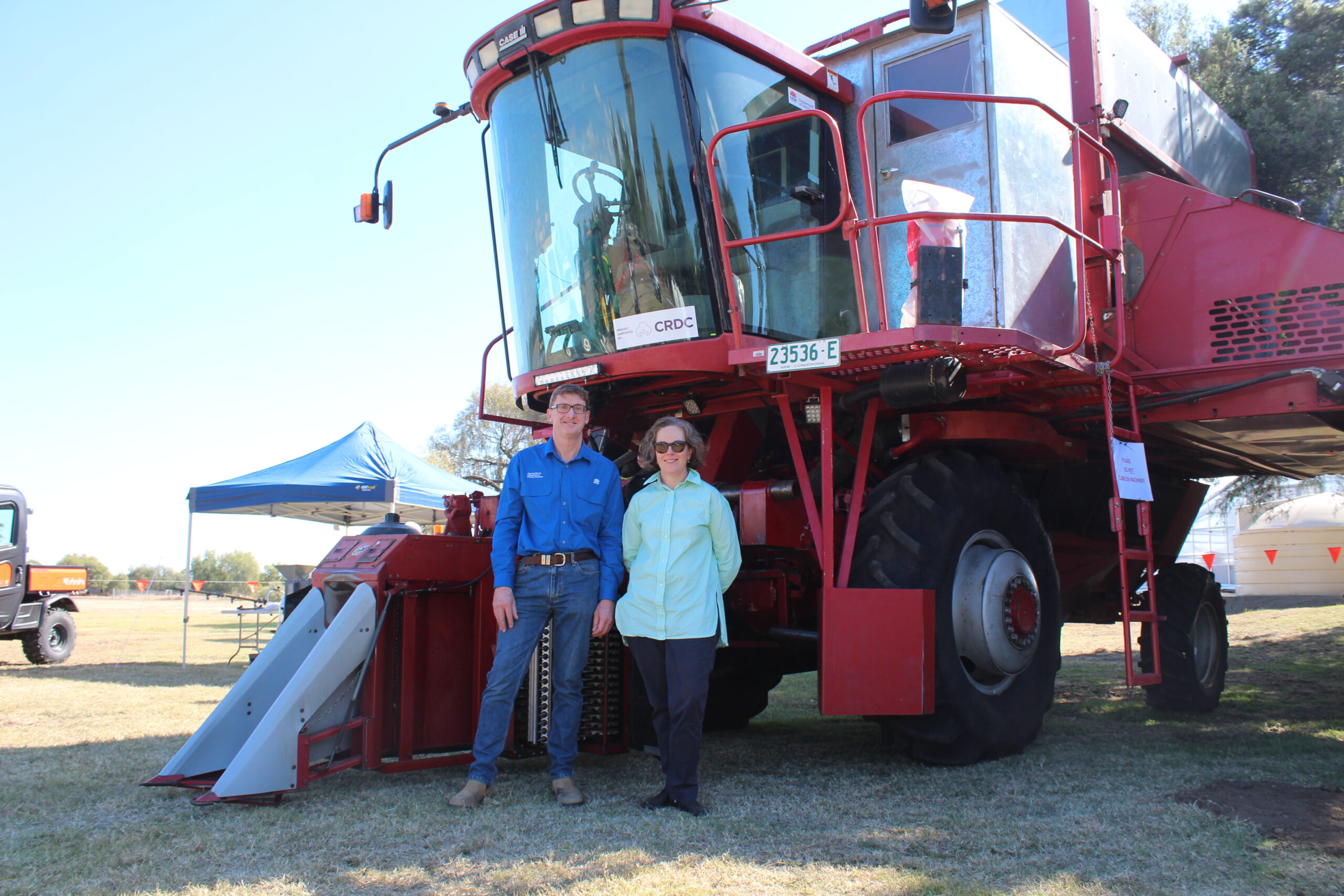The NSW Department of Primary Industries warmly welcomed community members through the gates of the Australian Cotton Research Institute on Saturday to celebrate 65 years of primary industries research at the site.
“Today is firstly about celebrating the 65th anniversary and it’s also about highlighting what is essentially a community asset and the work that we do here that benefits not only the local community but also the agricultural sector in general,” said Bruce Etheridge, NSW DPI’s site manager.
The open day attracted tourists, with an enthusiastic group of caravaners stopping at ACRI first thing on Saturday morning, eager to soak up the region’s agricultural research activities.
Family and friends of site employees, locals, government agencies, community groups and organisations also flocked to the ACRI, taking the opportunity to join farm tours, talks and demonstrations by DPI and CSIRO staff as well as enjoy the historical and machinery displays, food and fashion stalls, and other entertainment.
Attendees at the open day, celebrating 65 years of agricultural research and development in the Narrabri region, also took part in a workshop organised by DPI’s Farm Business Resilience Program, which focused on attracting, retaining, and developing skilled agricultural staff.
NSW Department of Primary Industries owns and operates the ACRI, but facilities at the site are shared with the CSIRO’s agriculture and food department.
Being based in the rich and diverse agricultural heartland of the Namoi Valley means site employees are part of the local agricultural community, regularly interacting with the farmers they provide critical research for and help contribute to the sustainability and profitability of the region’s farms and economy.
“It is a very important centre for the town – all our workers here are locals, we buy locally, we contribute to the community and the fabric of the community,” said Mr Etheridge.
“I think being a local myself, a lot of people might not be aware of what we do out here and also the size of the place and the breadth of work we do, even the name ‘Australian Cotton Research Institute’ – but we do a lot of cereal grains research too, a lot of pulse research so there are other crops that we research and contribute to other than purely cotton.
“I think we can’t underplay the importance of the research station here to the agricultural sector, certainly this site has contributed largely to the development of the cotton industry in Australia with new varieties.
“We’re continuing to develop varieties that use less chemicals, that use less water, that produce more, and Australia really is the world leader in cotton production.”
NSW DPI Australian Cotton Research Institute director Rod Jackson said staff were excited to invite the local community and other stakeholders to the open day, showcasing achievements in cotton and grain research as well as the economic and social contribution DPI makes to the region.
“DPI is pleased to be able to welcome the community to view our world-class facilities, learn about current research and development programs as well as hear about our rich history and ongoing commitment to creating stronger primary industries,” Mr Jackson said.
“Since being established in 1958, the DPI ACRI has played a vital role in ensuring the cotton and broadacre cropping industries continue to be productive, profitable and sustainable.
“This 65-year milestone reminds us of the important, and broad, research and development we undertake here at Narrabri and DPI’s commitment to deliver world-renowned research and development that maximises outcomes for NSW primary industries and the communities they support.”
Some of the achievements at the DPI ACRI include: the development of over 100 different cotton varieties with world-leading yields, due to superior disease resistance and fibre quality traits; the development of integrated pest management products for use in cotton and other broadacre crops such as new biological pesticide products and an insect behaviour modifying product that can be used to control sucking pests on cotton, macadamias and other agricultural crops; long term research trials that track the changes in key agricultural sustainability measures such as water use, nutrient management and soil carbon under different production rotations and systems; research programs specialising in weed management and herbicide damage in cotton; research into cotton and grains insect pesticide resistance surveillance program,
To order photos from this page click here










